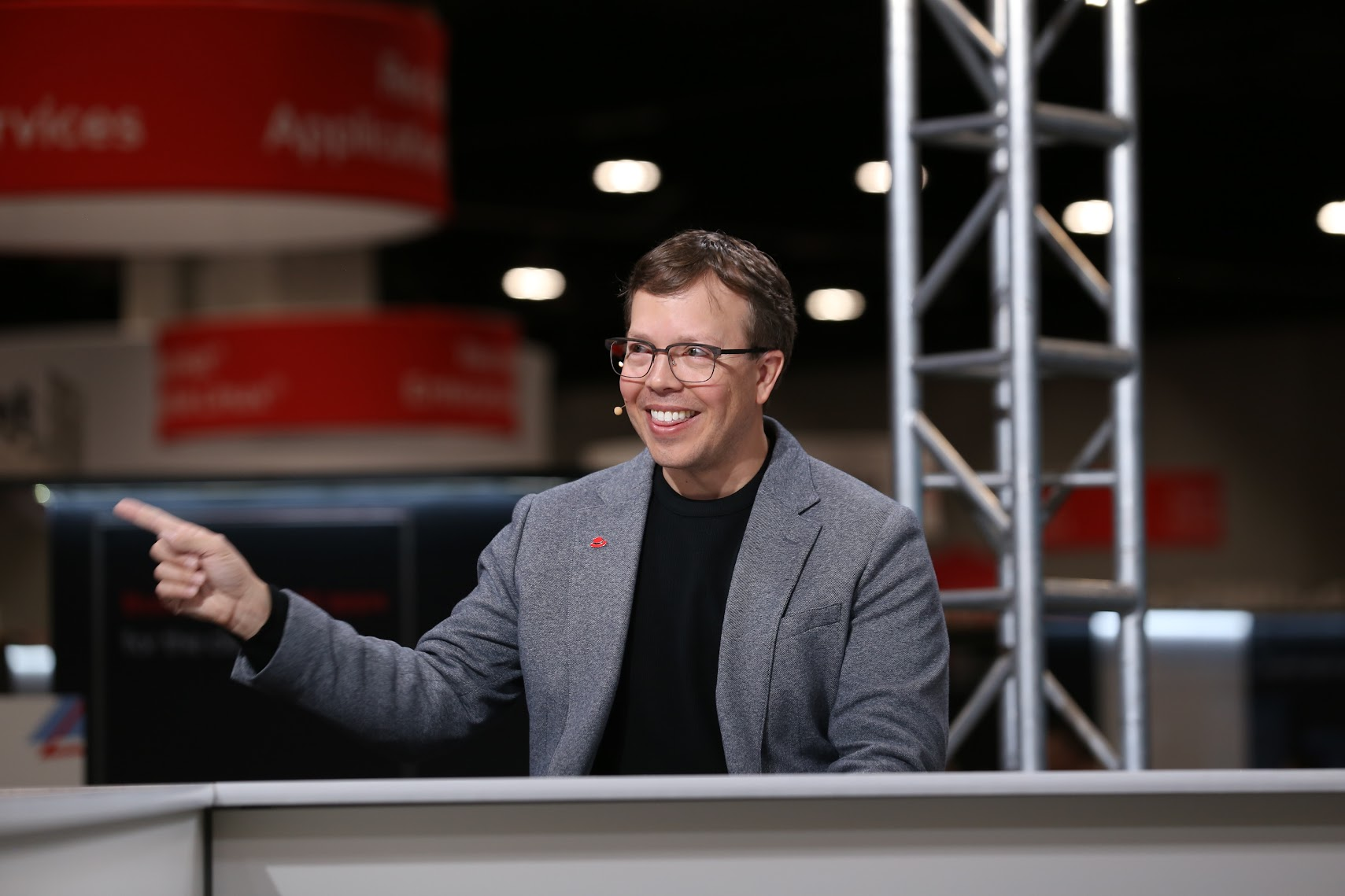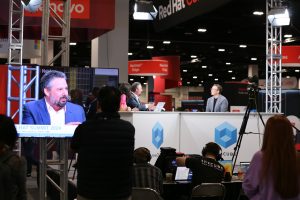 AI
AI
 AI
AI
 AI
AI
Red Hat Inc. is making significant strides in artificial intelligence development, including the fusion of the company’s traditional open-source ethos with cutting-edge artificial intelligence technologies.
Key innovations are simplifying AI applications and democratizing advanced technology development for broader use, according to Matt Hicks (pictured), president and chief executive officer of Red Hat Inc.
“If you look at the two ingredients at the center for us are the opening of language and code models, because if we look at what’s happening in AI, there’s a language element … and a coding element that’s near and dear to my heart,” Hicks said. “I think it will change how we write apps, how we build better quality. Hand in hand with that goes the InstructLab technology.”

Red Hat CEO Matt Hicks talks about advancements in AI through the integration of open-source principles.
Hicks spoke with theCUBE’s Rebecca Knight and Rob Strechay at Red Hat Summit, during an exclusive broadcast on theCUBE, SiliconANGLE Media’s livestreaming studio. They discussed Red Hat’s advancements in AI through the integration of open-source principles, focusing on simplifying AI applications and making technology development more accessible. (* Disclosure below.)
The heart of Red Hat’s strategy revolves around the open-source model, which has been a cornerstone of the company since its inception. The importance of this approach within the realm of AI can’t be overstated, according to Hicks.
“Red Hat’s at its best when we are focused on building blocks,” Hicks said. “When I look at this work with RHEL AI … it’s not CPU-based; it’s GPU-based. The machines are a bit different, but it is the exact same playbook. How do you take all this excitement and innovation, make it consumable to enterprises, and then work with both the technology providers, like Nvidia, Intel, AMD, and the OEMs, who are going to put together like a Dell PowerEdge that the users can then start to work with?”
This reflects a commitment to an open-development environment where developers can contribute to and benefit from collective advancements. Red Hat introduced tools such as InstructLab to enhance and simplify the training process of AI models.
“As good as these models get, they never do my thing or the thing I want, and training them has been … impressively hard over the last year,” Hicks said. “This technology can work, and this just puts it within reach of being able to train using a lot of new technologies well.”
A significant portion of the summit’s discussions focused on partnerships and collaborations. Hicks compared these to the early days of Linux, highlighting their fundamental role in the event.
“I love every second of it, because it just feels like we’re back to our sweet spot, the thing we do,” he said. “It really has reach to anyone on the planet that’s starting with AI because of those partnerships.”
This approach not only leverages the strengths of various industry players, but also ensures that AI technologies are accessible to a wider range of users and developers. The democratization of AI model training emphasizes Red Hat’s aim to simplify the process to enable participation in artificial intelligence development even by those without extensive resources, Hicks added.
“One of the things I’m most passionate about is we can make the training work in single phases on a laptop,” he said. “So, if it is your IP and you’re not ready to spend a half a million dollars on a machine, you can at least start to do what I did in the early days of Linux. Just my laptop or my desktop, see if directionally, my skill, my knowledge sticks with this. Then if it does, you can progress those bets.”
This strategy is intended to empower more developers by minimizing the barriers to entry for AI development and fostering a community where innovations are shared and enhanced collectively.
Here’s the complete video interview, part of SiliconANGLE’s and theCUBE Research’s coverage of Red Hat Summit:
(* Disclosure: Red Hat Inc. sponsored this segment of theCUBE. Neither Red Hat nor other sponsors have editorial control over content on theCUBE or SiliconANGLE.)
Support our mission to keep content open and free by engaging with theCUBE community. Join theCUBE’s Alumni Trust Network, where technology leaders connect, share intelligence and create opportunities.
Founded by tech visionaries John Furrier and Dave Vellante, SiliconANGLE Media has built a dynamic ecosystem of industry-leading digital media brands that reach 15+ million elite tech professionals. Our new proprietary theCUBE AI Video Cloud is breaking ground in audience interaction, leveraging theCUBEai.com neural network to help technology companies make data-driven decisions and stay at the forefront of industry conversations.